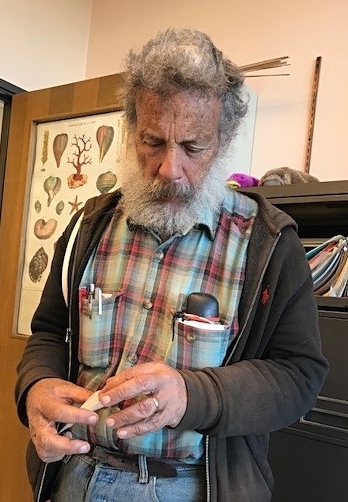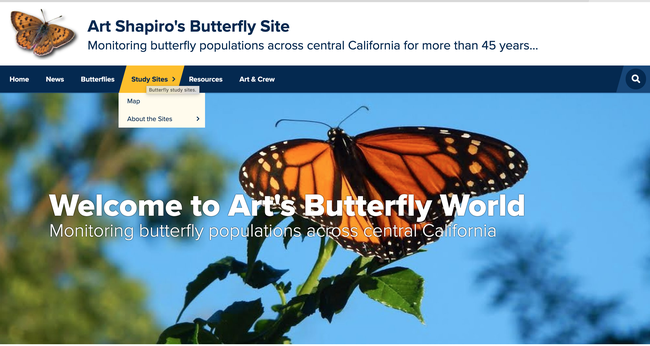
Butterfly guru Art Shapiro, UC Davis distinguished professor of evolution and ecology, has spotted only one moth and one butterfly since Wednesday, Jan. 5.
Shapiro is the professor who sponsors the annual "Beer for a Butterfly Contest" for scientific research. It works like this: Find the first cabbage white butterfly of the year in Sacramento, Yolo or Solano counties, deliver it live to his department, and if you win, you receive a pitcher of beer or its equivalent. He canceled the contest this year due to rising COVID pandemic concerns.
But he's out looking.
In a group email on Tuesday, Jan. 4, Shapiro wrote that "about 4:50 p.m. a noctuid moth landed on my living-room window. I could see by the thoracic hair tuft that it was a Plusiine of some kind. I went outside to examine it, but it had not really settled in and it flew off. The light was too dim to have any confidence as to the species, except I know it wasn't biloba. First Lep of 2022! It was about 55F and overcast."
On Wednesday, Jan. 5, "it was much less cloudy than expected," Shapiro noted. "I decided to stay around campus and check out the Vanessa territorial sites. I figured there would be cumulus in the afternoon, and there were--they even congealed into broken stratocumulus for a while. It was warmest between noon and 2 p.m., about 60-61F, with a light southerly wind. I didn't find any Vanessas and gave up by 3. But I did see a butterfly! A fresh-looking Agraulis vanillae at the EC (Experimental Community) Gardens."
"At 85% precipitation for the year, with the increased temperatures relative to a baseline mean of 1980-2010, I'd estimate an additional 15% plant water stress over the year (equal to ~60% annual precip from normal). We showed that climatic water deficit goes up, even under future climate forecasts that are wetter, because evaporative demand increases with temperature (Thorne et al. 2015). If it's drier, then that effect is amplified."
"One of the reasons butterflies are such a great study system is how responsive they are to immediate, seasonal and possibly multi-year weather," Thorne wrote. "It would be interesting to look at future climate monthly predictions and measure how those relate to the observed faunal response to the measured changes in weather-climate, to build predictive models. We should have enough track record to make some predictions about faunal phenology under future climate. In the forest restoration world, the break between weather effects (such as a late rain or heat wave) on seedling survival and climate effects on longer-term site environmental conditions and seedling progression to early poly-size is about 5 years. That's an arbitrary line drawn looking at seedling survival/establishment."
Thorne attached a research article he co-authored: The Magnitude and Spatial Patterns of Historical and Future Hydrologic Change in California's Watersheds, published Feb. 12, 2015 in Ecological Society of America's journal, Ecosphere.
Monitoring Since 1972. Shapiro has monitored butterfly population trends on a transect across central California since 1972 and records the information on his research website at http://butterfly.ucdavis.edu/. His 10 sites stretch from the Sacramento River Delta through the Sacramento Valley and Sierra Nevada mountains to the high desert of the Western Great Basin. The largest and oldest database in North America, it was recently cited by British conservation biologist Chris Thomas in a worldwide study of insect biomass.
Shapiro, a member of the UC Davis faculty since 1971 and author of the book, Field Guide to Butterflies of the San Francisco Bay Area and Sacramento Valley Regions, has studied more than 160 species of butterflies in his transect.
Side note: How is Art Shapiro celebrating his birthday? With a "~6% positivity rate and 617 new Covid cases on campus already this year," he said that he is "lying low."
"I will probably celebrate by ordering a pizza," Shapiro said. "Nothing more elaborate, I assure you, and no gathering of any kind. Stay well, stay safe!"
Happy birthday, Art!
Attached Images:
